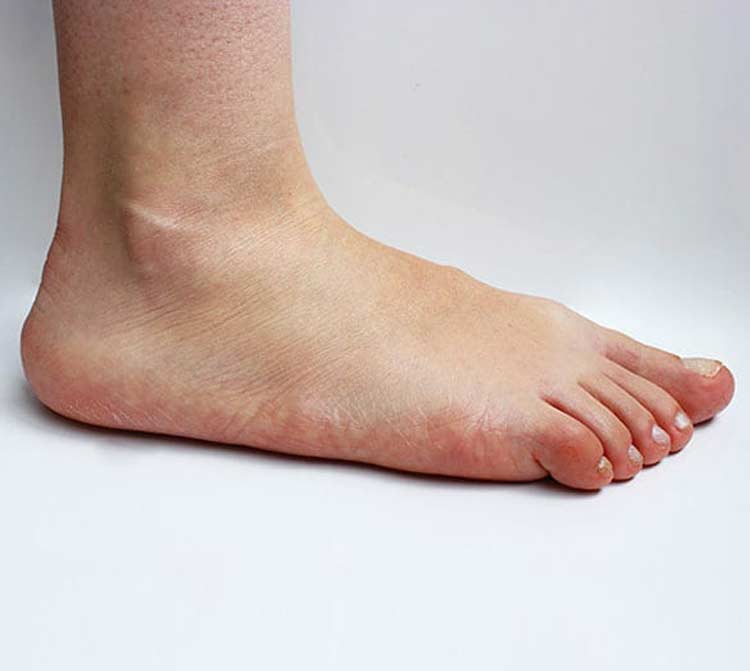
Learn about how surgical flat foot correction can restore natural alignment.
When children have flat feet, the condition often corrects itself during the normal stages of development. If flatfoot continues into adulthood or becomes a problem later in life, surgery may be necessary to restore the foot’s arch.
- The purpose of flat foot surgery is to restore the natural alignment of the foot to make it easier to stand, walk, or participate in preferred activities without pain or instability.
- It’s a goal typically achieved with a patient-specific combination of procedures, some of which involve bone cuts, to repair damage to tendons and ligaments supporting the foot’s arch.
What Happens Before Flat Foot Surgery?
Prior to surgery, a patient will be fully evaluated to determine if there are other foot issues, such as related issues with any of the 20 muscles in the foot or ligaments and tendons in the affected area, that will also need to be corrected. A pre-surgery assessment may also include asking the patient to walk to assess how flat feet are affecting the ability to walk and balance. Patients who smoke are typically asked to stop smoking prior to surgery to avoid possible issues with circulation and delivery of nutrients to tissues. It’s also important for patients to be fully committed to the recovery process before considering surgery.
How Is Surgical Flat Foot Correction Done?
Usually performed under general or regional anesthesia, surgical flat foot correction may involve a combination of surgical techniques. Generally, corrective procedures fall into two categories. There are procedures that correct specific deformities of bones of the feet. Other types of correction surgery are done to repair damaged tendons or ligaments in the foot. A podiatrist will determine what specific procedures will likely benefit you.

What Specific Types of Surgery May Be Performed?
Surgery recommendations will differ based on individual needs and surgery goals. However, there are certain procedures that are commonly performed to correct flat feet.
- Medializing calcaneal osteotomy: This is a heel side procedure done to restore alignment if the patient’s heel bone has shifted. Part of the heel bone is cut and it’s put into place with a plate or surgical screws.
- Tendon and ligament procedures: Surgery of this nature may involve removing the posterior tibial tendon that runs just below the foot’s arch if it is stretched or damaged. Tendons may also be rerouted to support the arch. The spring ligament that supports the arch and the deltoid ligament on the inside of the ankle may also need to be repaired.
- Lateral column lengthening: The purpose of this procedure is to correct problems with outward rotation of the foot. Part of the heel bone is cut and a bone wedge is inserted to add length to the heel bone and shift the foot back into the correct position.
- Double/triple arthrodesis: Usually recommended for patients at a stage where abnormalities have made the foot inflexible, this procedure involves the fusion of one or more joints of the foot.
- Medial cuneiform dorsal opening wedge osteotomy: If the big toe is elevated because of arch problems, this procedure may be performed. A bone wedge is inserted into the top part of the bone to push the big toe downward.
- First tarsal-metatarsal fusion: Also done to correct issues with the big toe affecting the foot’s arch, this technique involves fusing bones of a joint in the mid-part of the foot into their new position. Hardware will be inserted to hold the bones in place until the fusion forms.

What Happens After Surgical Flat Foot Correction?
Following surgery, patients may need to wear a cast or have a split placed on the foot. After the sutures are removed, a removable boot or a new cast is usually placed on the foot. No weight should be placed on the foot until about 6-8 weeks following surgery. After three months or so, patients usually begin wearing shoes again. Ankle braces and inserts are often recommended to provide added support. Many patients also benefit from physical therapy or a conditioning program during the later stages of recovery.
Before surgical flat foot correction is considered, patients are typically encouraged to explore a wide range of non-surgical options, including non-steroidal anti-inflammatory drugs (NSAIDs), custom orthotics, and active and passive forms of physical therapy. If symptoms aren’t improving or foot pain is severe, surgery may provide much-appreciated relief. Full recovery from surgery for flat feet can take up to a year. Patients with diabetes or other underlying health issues may need to check with their regular doctor first before undergoing surgery for arch problems.

